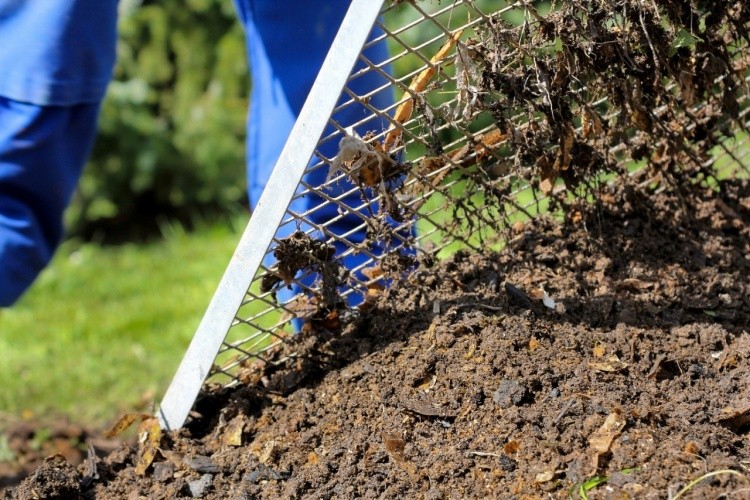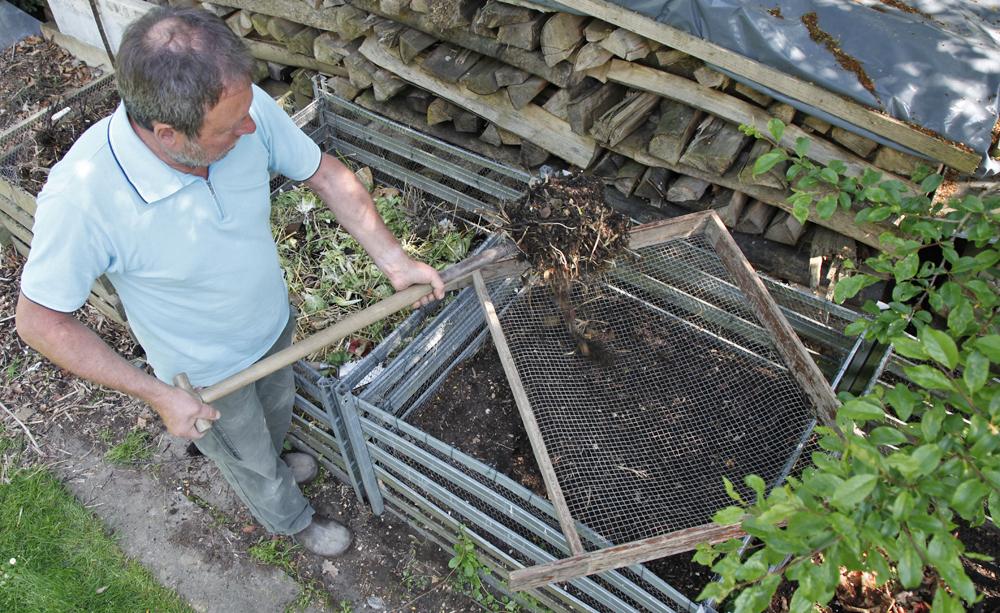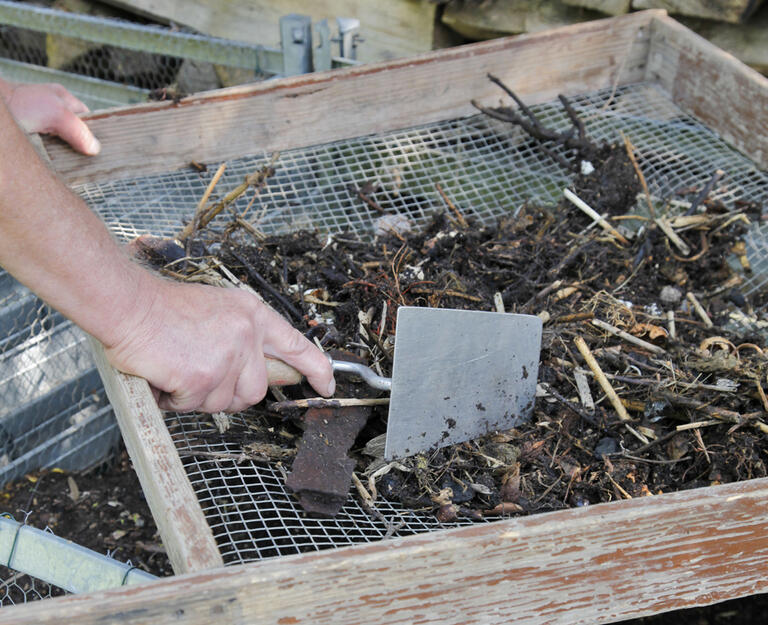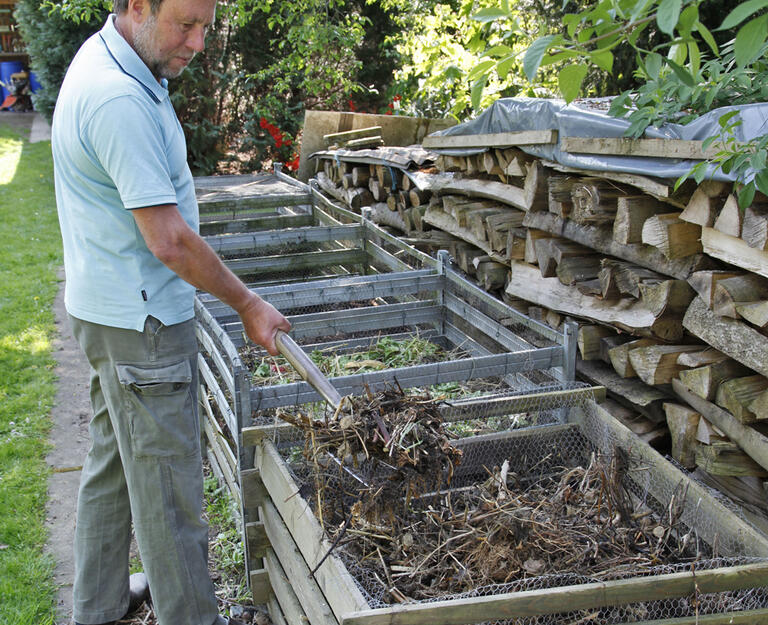Not all organic materials on the compost heap decompose at the same rate: often, even after a year, coarse pieces of branches or eggshells, for example, still remain. Since incompletely rotted components remove nitrogen from the soil through the ongoing decomposition process, it is advisable to sift the compost before spreading it.
Contents
This is the easiest way to sift compost
The most common are throw-through sieves. You can also build one yourself, for example from an old fence mesh. A mesh size of at least 15 mm is ideal. It is best to lay out a large tarpaulin before you start work – this makes cleaning easier afterwards. Set up the grid at an angle and throw the compost through it shovel by shovel.
The fineness of the material can be influenced by the degree of inclination: the steeper the angle of inclination, the finer the compost will be sifted. The fine humus trickles through the sieve, while coarse components simply slide off. They are returned to the compost and allowed to rot further.
For smaller quantities, you can also place the sieve directly on the wheelbarrow – then the fine compost is immediately ready for removal.
Tip: Choose a day with dry weather for compost screening so that the material trickles well and does not clump.

To prepare the seedbeds in the vegetable garden need the finest possible crumb compost. How to sift the black gardener’s gold.

A compost bin with three to four bins is ideal. This way you can plan one as a storage for the screened compost. A homemade compost screen is a simple wooden frame covered with a suitable piece of rectangular wire with a mesh size of around ten millimeters and placed over the bin to collect the compost soil. Alternatively, you can place the screen directly on a wheelbarrow to conveniently transport the screened compost to the beds right away. The disadvantage is that the coarse components remain on the sieve and must be scraped off or shaken down with the shovel or a trowel.
If you have enough space, you can also use a so-called throw-through sieve to sieve the compost. It has a large, rectangular screening surface and two supports with which it is set up at an angle. Now, from one side, use a digging fork or shovel to hurl the compost against the sieve. The fine components will fly through for the most part, while the coarse ones will slide down the front. Tip: It is best to place a large piece of fleece under the sieve – this way you can easily pick up the sieved compost afterwards and transfer it to the wheelbarrow.
Distribute compost on sieve
Place the compost sieve on the storage bin and spread the compost, which has rotted through, on it.

Separate components of the compost
Use a trowel or hand shovel to push the fine material through the mesh. Be careful not to push the coarser components over the sieve edge in the process – ideally, this should be slightly elevated.
Shovel off sifted compost
Shovel the screened material into a wheelbarrow and take it to the bed, where it is then spread with a rake.

Compost coarse compost residues again.
Use the screen to dump the coarser scraps back into the other compost bin. Mix them with fresh waste and put them back on to start a new rotting process.
Spread compost in the bed
You can also use fine-crumb compost for flower beds and ornamental shrubs. Spread three to five liters per square meter and spread it with a rake. It is raked in very lightly and thus mixed with the garden soil. Digging deeper into the soil would do more harm than good in beds that have already been planted, because many plants root shallowly and the root system could be damaged. In addition, earthworms and other soil organisms ensure that the humus gradually mixes with the topsoil. Tip: If you want to prevent weeds from sprouting quickly after the humus cure for ornamental shrubs, cover the compost with a layer of bark mulch about five centimeters thick.

